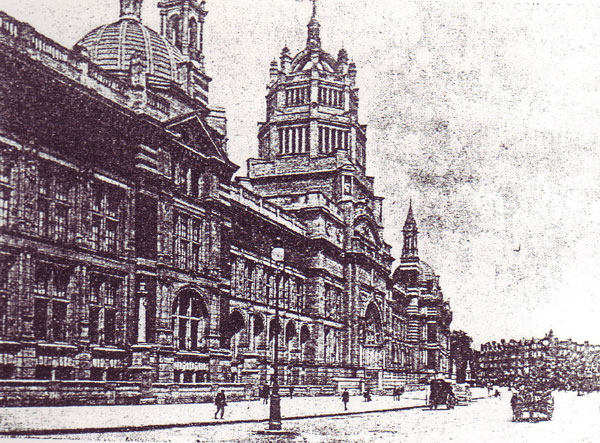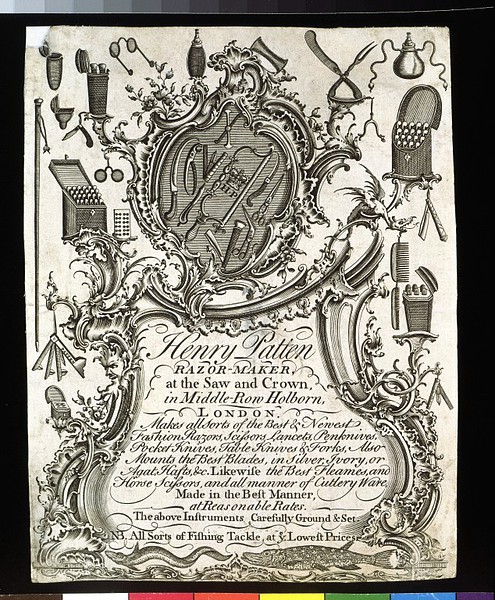
Razor (mit-khone) (pdf)
Place of origin: Thailand
Date: 18th century
This razor was used in conjunction with the tonsure scissors (402-1894) during the top-knot ceremony. The high level of craftsmanship that it displays are similar to the tonsure scissors, suggesting both formed part of a set.
In the seventeenth century, male
fashion favoured clean shaven features, and by the 1680s a new type of
straight razor, with a narrow folding blade, made the process easier.
The French barber Jean-Jacques Perret published a work on the art of
shaving in 1769 -- a treatise intended to promote a razor with a
protective L-shaped guard along one edge of the metal blade that he had
designed himself. This case, with its toilet and shaving implements (the
razors are of the folding type), is a well-preserved and early example.
Tortoiseshell was used in the Netherlands as a background to silver
openwork on bookbindings and caskets. The tassel and shell-like motifs,
together with the curling, interlaced 'c' shapes which decorate this
casket and its implements seem to be an interpretation of fashionable
seventeenth-century designs such as those by the French-born designer
Daniel Marot (1661–1752), who worked principally for the courts of
Holland and England.
Napoleon (pdf)
Trade card (pdf)
The engraver Edward Warner (active about 1750) has shown, within, around and hanging from a very elaborate, asymmetrical Rococo framework, some of the goods sold by Henry Patten. His main stock seems to have been cutlery (some of it sold in special boxes), razors, penknives and scissors, including horse scissors.
Razor (pdf)
Place of origin: Europe (West, made) Date: 18th century (made)
Cut throat razor with guards covered with tortoiseshell with silver pique in the form of dragon's heads and floral scrolls. Mark: + V Z,

Place of origin: Paris, France (printed) Date: 1871 (printed)
Satirical print in which Paschal Grousset is depicted as a moustachioed woman, wearing a red and blue dress and holding a barber's razor.
Copyright © 2003 ~ 2012 ® RAZORLAND ~ All rights reserved




